Nature, not the calendar, should tell us when the fishing season starts. This year it has done precisely that! It has been a cold start, and a very late spring. For those of us that fish the Highland lochs of Scotland for wild brown trout there has been little point venturing out.
In the last few days the tree outside my living room window has burst into life. Looking at it my thought is “about time”. The fishing season is almost two months old, and despite our best efforts has only netted one brown trout. Four days ago at a club social competition it actually snowed.
Anyway spring is here, so now we can start, but where and how? In the early days there is little surface activity. On colder days we are often tempted with sunk lines, and other such snares for the soul. Usually I resist this temptation by the simple expedient of not carrying them with me. Typical tackle for an early season day is a long, 10 foot, rod for a 5 or 6 weight floating line, and lots and lots of layers of clothing.
As the water warms the trout move up in the surface more. This gives us the top water sport we so enjoy later in the season. As many of our waters freeze over in the winters they are still cold now. It is a fact that I do not hear mentioned much in fly fishing, but the water at the bottom of any large body of water, even with the surface frozen, will be at 4˚c. This will be the case so long as the water doesn’t freeze totally. 4˚c is the temperature that equates to the smallest volume for liquid water. Therefore it sinks down to the bottom. Often times you must reach this warmer layer to find active trout.
Sinking lines may be the first thing you reach for when thinking of fishing deep. I want my flies deep, not my line. So I use flies that will fish deep. Fortunately the Highland lochs are generally not very deep. Loch Farlary, for example, is barely deep enough to permit float tubing. A heavy, or should I say dense, fly will get down enough to put you in touch with trout.
Saying there is no surface activity is… well you know, a trout will do anything to prove you wrong. The surface is still a base that should be covered. It is normal practice to fish a team of flies on our lochs, most commonly 3, but 4 in favourable conditions. That means it is easy to cover a range of depths with a standard setup.
Perhaps the best way to illustrate the differences in early season is to look at the flies we use and where they go on the leader. First here is my typical leader setup. Make it as long as you can manage. However don’t exceed about 15 feet between bob fly and point, or you will have difficulties landing fish. The bob fly catches in your tip ring and you still can’t reach the fish to net it. We would laugh at you!
Lets start with the point flies. These are slimmer flies, which are always designed to sink a little. The ones for colder times are designed to sink quite a bit. Winged and “spider” wets are ideal in this position, we also use a couple of nymphs. What has surprised me is that we have never had any success fishing buzzer (midge) patterns. If they work on your waters then some wire body buzzers will get down quickly.
Here are the point flies we use in their early season version and the “summer” version.
To start with two spider patterns. The Black Pennell, and the Tavy Terror. The usual sizes for these are 10 to 14. [The Spring dressing is on the left compared with the summer dressing on the right]
If you want a brighter fly the Teal Blue and Silver, or the Peter Ross are good.
Another good one for the point is the Hendricks’s Spider; we don’t have a summer version for this fly. Hmm maybe we should.
Two nymphs we have found that work well when you want extra depth are a Wire Woven Copper John and my By Colour Nymph with a bead head. The WW Copper John is a very heavy fly that can be used for a stalking bug.
This is another we do not use in a lighter dressing of in the summer. It is purely a fly for getting down deep, anytime. It was also the fly that took my first fish of this season.
The Middle Dropper. This is always the hardest of flies to choose; bushier than the point flies but not as bushy as the top dropper (bob) flies. These flies are usually not weighted. The summer versions of the point flies can be used effectively in this position. Using these flies here saves dressing a set of flies specially.
Top Dropper or Bob Flies. Here there is also a big difference between early season flies and those for later. There are a lot of traditional top dropper flies. I couldn’t begin to make a list of them all. I’ll show you three in spring and summer guise, then you can see the difference in style between the two.
The idea here is that the summer dressing will wake across the surface and may bob under when pulled. The spring dressing will sit more down in the surface and may bulge the surface when pulled.
A team of flies is much more than the sum of its parts. The flies work together. On one occasion last year I fished a Muddled Kate on the top dropper. Though I caught good numbers of fish none took the Muddled Kate. It would have been folly to take it off the cast though. Fish were coming to the muddled Kate, turning short, and taking one of the other two flies on the way down. That’s real team work.
Another tactic we have worked out involves the fishing of just two flies. In early season many people resort to pulling lures. Something we are not best pleased with. This is our answer to that. I’m probably going to be in trouble for sharing this, but Mike has enough “secret” flies. This one’s mine, so I’ll tell you about it. The Orange Rough Fly.
I know it looks traditional enough but here is another photo of it along side a standard size 12 Black Pennell. The secret is it is tied on a Mustad R90 size 6!
Fish this quite fast, with a smaller imitative pattern like a Silver Invicta above it.
Keep going right into the bank or boat with your retrieve. Takes will often come as you lift off. Sometimes the fish will chase the Rough Fly then power ahead and take the smaller fly. It certainly wakes them up!
Don’t expect too much from the early season, especially if the spring is as late as it has been this year. Though slow, sport can be had. After all, “A bad day’s fishing is better than a good day at work”.
When I told Mike that I was working on this article he said “Ho that’s easy, just write, “Come Back In June!””
Cheers,
Alan.

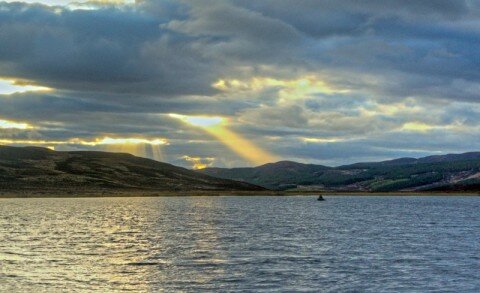



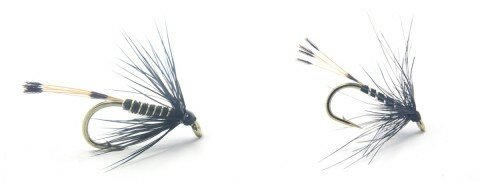
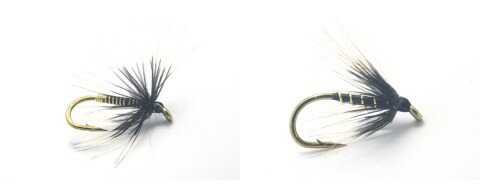
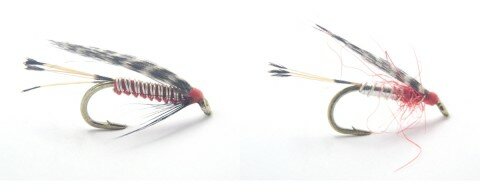
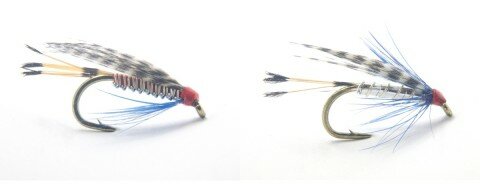
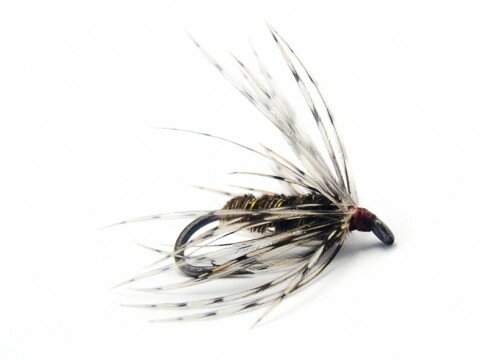
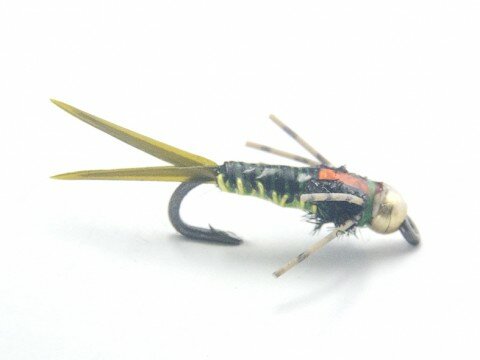
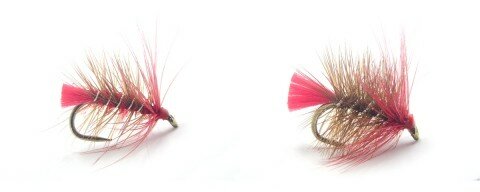
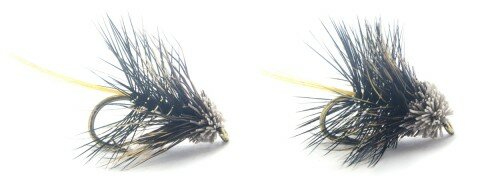
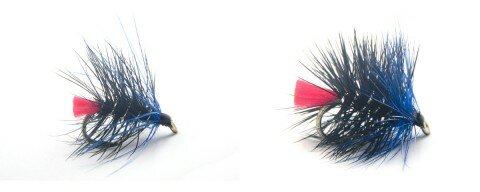

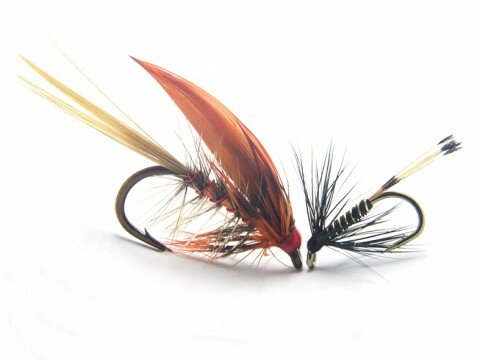

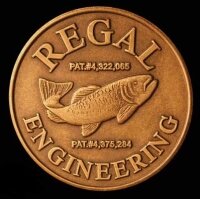







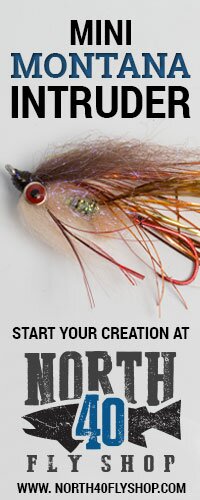





Pingback: Tippets: Hillstrand Against the Pebble Mine, Spring Fishing Tactics, Best Reel Ever Made | MidCurrent
Pingback: Tippets: Hillstrand Against the Pebble Mine, Spring Fishing Tactics, Best Reel Ever Made - Skiff Life - Flats and Back Bay Fishing
Alan,
Just tried your email that you gave me, with news/letter, without getting it accepted for transit to you.
So looked at your interesting fishing web-sites, but still hope to send on my
local newsy emailed letter.
Are you, otherwise than this, email-able now. As have rtn seat for Scotland anon Nov.
Hope local irritants in G easing for you!
All best,
Francis
Hi Francis,
Will get out your details and email today. Am now mobile so when you land I can collect.
Cheers
Alan.
Thanks for such a helpful article, I am quite new to Fly Fishing so have alot to learn, I can often be found on my day off practising my casting, and struggling with a long leader and 3 flies on the banks of St Johns Loch in Dunnet Caithness. I have still to catch my first fish but of course it has been bittely cold. But still an enjoyable day fine tuning my casting.
Hi Tom,
As it happens I was in Dunnet on Friday evening. Not fishing related though.
Right now I don’t have a vehicle, but when I get back on the road I’d love to have a ride up there and get you going. Once you get that first fish it will be you that will be caught.
If I can help at all in the mean time let me know. I’m down in Golspie
Cheers,
A.
Hi Alan, thanks for the tips, I am getting better, just shortenned my leader and use 1 0r 2 flies instead of 3.
I now have an outboard so went on the Loch with a boat yesterday amid hail and snow! It was bitterly cold so used a gold head hairs lug nymph. While not catching anything I am sure I had a few pulls
Yes some spring we are having.
Even now I will drop down to two flies if the wind is really strong. However, three flies on a cast gives you more than the sum of its parts. Often you will find that you will be catching on point or middle fly, if you change the top fly you stop catching. The top fly often brings the fish up. Then they take one of the others.
You will get gentle takes this time of year. Just keep retrieving when you do. That will usually be enough to hook the fish. When you get a proper take you’ll know about it!
Cheers,
A.